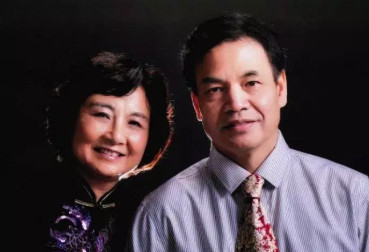Jack Roosevelt "Jackie" Robinson (January 31, 1919 – October 24, 1972) was the first African-American Major League Baseball (MLB) player of the modern era. Robinson broke the baseball color line when he debuted with the Brooklyn Dodgers in 1947. As the first black man to openly play in the major leagues since the 1880s, he was instrumental in bringing an end to racial segregation in professional baseball, which had relegated African-Americans to the Negro leagues for six decades. The example of his character and unquestionable talent challenged the traditional basis of segregation, which then marked many other aspects of American life, and contributed significantly to the Civil Rights Movement.
Apart from his cultural impact, Robinson had an exceptional baseball career. Over ten seasons, he played in six World Series and contributed to the Dodgers" 1955 World Championship. He was selected for six consecutive All-Star Games from 1949 to 1954, was the recipient of the inaugural MLB Rookie of the Year Award in 1947, and won the National League Most Valuable Player Award in 1949 – the first black player so honored. Robinson was inducted into the Baseball Hall of Fame in 1962. In 1997, Major League Baseball retired his uniform number, 42, across all major league teams.
Robinson was also known for his pursuits outside the baseball diamond. He was the first African-American television analyst in Major League Baseball, and the first African-American vice-president of a major American corporation. In the 1960s, he helped establish the Freedom National Bank, an African-American-owned/controlled financial institution based in Harlem, New York. In recognition of his achievements on and off the field, Robinson was posthumously awarded the Presidential Medal of Freedom and the Congressional Gold Medal.
Early life
Robinson was born on January 31, 1919, into a family of sharecroppers in Cairo, Georgia, during a Spanish flu and smallpox epidemic. He was the youngest of five children, after siblings Edgar, Frank, Matthew (nicknamed "Mack"), and Willa Mae. His middle name was in honor of former President Theodore Roosevelt, who died twenty-five days before Robinson was born. After Robinson"s father left the family in 1920, they moved to Pasadena, California. The extended Robinson family established itself on a residential plot containing two small houses at 121 Pepper Street in Pasadena. Robinson"s mother worked various odd jobs to support the family. Growing up in relative poverty in an otherwise affluent community, Robinson and his minority friends were excluded from many recreational opportunities.As a result, Robinson joined a neighborhood gang, but his friend Carl Anderson persuaded him to abandon it.
Military career
In 1942, Robinson was drafted and assigned to a segregated Army cavalry unit in Fort Riley, Kansas. Having the requisite qualifications, Robinson and several other black soldiers applied for admission to an Officer Candidate School (OCS) then located at Fort Riley. Although Army policy had allowed black applicants to enter OCS since July 1941, the applications of Robinson and his colleagues were inexplicably delayed for several months. After protests by heavyweight boxing champion Joe Louis (then stationed at Fort Riley) and the help of Truman Gibson (then an assistant civilian aide to the Secretary of War), the men were accepted into OCS. This common military experience spawned a personal friendship between Robinson and Louis. Upon finishing OCS, Robinson was commissioned as a second lieutenant in January 1943. Shortly afterward, Robinson and Isum were formally engaged.
After receiving his commission, Robinson was reassigned to Fort Hood, Texas, where he joined the 761st "Black Panthers" Tank Battalion. While at Fort Hood, Robinson often used his weekend leave to visit the Rev. Karl Downs, President of Sam Huston College (now Huston-Tillotson University) in nearby Austin, Texas; Downs had been Robinson"s pastor at Scott United Methodist Church while Robinson attended PJC.
An event in July 1944 derailed Robinson"s military career. While awaiting results of hospital tests on the ankle he had injured in junior college, Robinson boarded an Army bus with a fellow officer"s wife; although the Army had commissioned its own unsegregated bus line, the bus driver ordered Robinson to move to the back of the bus. Robinson refused. The driver backed down, but after reaching the end of the line, summoned the military police, who took Robinson into custody.When Robinson later confronted the investigating duty officer about racist questioning by the officer and his assistant, the officer recommended Robinson be court-martialed. After Robinson"s commander in the 761st, Paul L. Bates, refused to authorize the legal action, Robinson was summarily transferred to the 758th Battalion – where the commander quickly consented to charge Robinson with multiple offenses, including, among other charges, public drunkenness – even though Robinson did not drink.
By the time of the court-martial in August 1944, the charges against Robinson had been reduced to two counts of insubordination during questioning. Robinson was acquitted by an all-white panel of nine officers.Although his former unit, the 761st Tank Battalion, became the first black tank unit to see combat in World War II, Robinson"s court-martial proceedings prohibited him from being deployed overseas, thus he never saw combat action. After his acquittal, he was transferred to Camp Breckinridge, Kentucky, where he served as a coach for army athletics until receiving an honorable discharge in November 1944. While there, Robinson met an ex-player for the Kansas City Monarchs of the Negro American League, who encouraged Robinson to write the Monarchs and ask for a tryout. Robinson took the ex-player"s advice and wrote Monarchs" co-owner Thomas Baird.
Post-military
After his discharge, Robinson briefly returned to his old football club, the Los Angeles Bulldogs.Robinson then accepted an offer from his old friend and pastor Rev. Karl Downs to be the athletic director at Sam Huston College in Austin, then of the Southwestern Athletic Conference. The job included coaching the school"s basketball team for the 1944–45 season. As a fledgling program, few students tried out for the basketball team, and Robinson even resorted to inserting himself into the lineup for exhibition games. Although his teams were outmatched by opponents, Robinson was respected as a disciplinarian coach,and drew the admiration of, among others, Langston University basketball player Marques Haynes, a future member of the Harlem Globetrotters.
Major leagues
Breaking the color barrier (1947)
The following year, six days before the start of the 1947 season, the Dodgers called Robinson up to the major leagues. With Eddie Stanky entrenched at second base for the Dodgers, Robinson played his initial major league season as a first baseman. On April 15, 1947, Robinson made his major league debut at Ebbets Field before a crowd of 26,623 spectators, including more than 14,000 black patrons. Although he failed to get a base hit, the Dodgers won 5–3. Robinson became the first player since the 1880s to openly break the major league baseball color line. Black fans began flocking to see the Dodgers when they came to town, abandoning their Negro league teams.
Robinson"s promotion met a generally positive, although mixed, reception among newspapers and white major league players.However, racial tension existed in the Dodger clubhouse. Some Dodger players insinuated they would sit out rather than play alongside Robinson. The brewing mutiny ended when Dodgers management took a stand for Robinson. Manager Leo Durocher informed the team, "I do not care if the guy is yellow or black, or if he has stripes like a fuckin" zebra. I"m the manager of this team, and I say he plays. What"s more, I say he can make us all rich. And if any of you cannot use the money, I will see that you are all traded."
Robinson was also derided by opposing teams. Some, notably the St. Louis Cardinals, threatened to strike if Robinson played. After the threat, National League President Ford Frick and Baseball Commissioner Happy Chandler let it be known that any striking players would be suspended. Robinson nonetheless became the target of rough physical play by opponents (particularly the Cardinals). At one time, he received a seven-inch gash in his leg. On April 22, 1947, during a game between the Dodgers and the Philadelphia Phillies, Phillies players called Robinson a "nigger" from their dugout and yelled that he should "go back to the cotton fields" Rickey later recalled that Phillies manager Ben Chapman "did more than anybody to unite the Dodgers. When he poured out that string of unconscionable abuse, he solidified and united thirty men."
Robinson received significant encouragement from several major league players. Dodgers teammate Pee Wee Reese once came to Robinson"s defense with the famous line, "You can hate a man for many reasons. Color is not one of them." In 1948, Reese put his arm around Robinson in response to fans who shouted racial slurs at Robinson before a game in Cincinnati.A statue by sculptor William Behrends, unveiled at KeySpan Park on November 1, 2005, commemorates this event by representing Reese with his arm around Robinson. Jewish baseball star Hank Greenberg, who had to deal with racial epithets during his career, also encouraged Robinson. After colliding with Robinson at first base on one occasion, Greenberg whispered a few words into Robinson"s ear, which Robinson later characterized as "words of encouragement." Greenberg had advised him that the best way to combat the slurs from the opposing players was to beat them on the field.
Robinson finished the season with 12 home runs, a league-leading 29 steals, a .297 batting average, a .427 slugging percentage, and 125 runs scored. His cumulative performance earned him the inaugural Major League Baseball Rookie of the Year Award (separate National and American League Rookie of the Year honors were not awarded until 1949).
World Championship and retirement (1954–1956)
In 1954, Robinson had 62 runs, a .311 batting average, and 7 steals. His best day at the plate was on June 17, when he hit two home runs and two doubles. The following autumn, Robinson won his only championship when the Dodgers beat the New York Yankees in the 1955 World Series. Although the team enjoyed ultimate success, 1955 was the worst year of Robinson"s individual career. He hit .256 and stole only 12 bases. The Dodgers tried Robinson in the outfield and as a third baseman, both because of his diminishing abilities and because Gilliam was established at second base. Robinson, then 37 years old, missed 49 games and did not play in Game 7 of the World Series. Robinson missed the game because manager Walter Alston decided to play Gilliam at second and Don Hoak at third base. That season, the Dodgers" Don Newcombe became the first black major league pitcher to win twenty games in a year.
In 1956, Robinson had 61 runs, a .275 batting average, and 12 steals. By then, he had begun to exhibit the effects of diabetes, and to lose interest in the prospect of playing or managing professional baseball.After the season, Robinson was traded by the Dodgers to the arch-rival New York Giants for Dick Littlefield and $35,000 cash. The trade, however, was never completed; unbeknownst to the Dodgers, Robinson had already agreed with the president of Chock full o"Nuts to quit baseball and become an executive with the company. Since Robinson had sold exclusive rights to any retirement story to Look magazine two years previously, his retirement decision was revealed through the magazine, instead of through the Dodgers organization.
